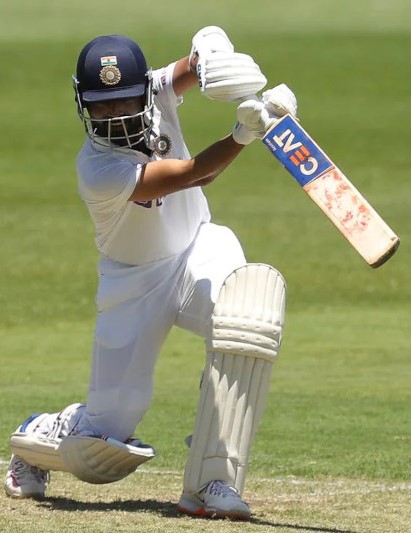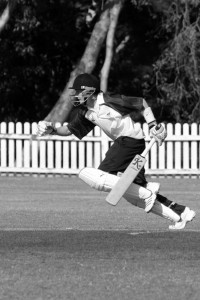Line and length together

Bowling a good line means not only bowling at the stumps but more accurately, bowling at middle and off stumps. Bowling down the leg side is a “big no” as it encourages attacking shots by the batter, eliminates the possibility of bowled and LBW dismissals, and increases the risk of giving away wides and byes.
Bowling a good line can also mean bowling between the lines of off stump and just outside off stump. This is known as the “corridor of uncertainty” where the batter is unsure whether to play at the ball or leave it alone. This should be your primary target as it gives the batter the fewest opportunities for scoring and gives you the best chance of taking wickets.
As a general rule, try and bring the batter on to the front foot by keeping the ball well-pitched up. If the batter is able to get on to the back foot and wait for the ball they will usually find it easier to play as they will have extra time to react to any change of direction or uncomfortable bounce.
A consistently testing line and length places great demands on the concentration powers and skill levels of the batter and makes it more difficult for him to score freely. You will be constantly battling your mind against his mind, your ideas against his ideas, in the hope that you will out-think him and force him into making a mistake which costs him his wicket.
Pace or spin versus accuracy?
A coach does any budding young fast bowler a major disservice by telling him to slow down for more accuracy. Likewise, in telling a young spinner to spin the ball less for more accuracy. Young fast bowlers who want to bowl fast must be encouraged to do so (providing they have a safe action) even at the expense of accuracy. Fast bowlers are a rare breed and must be encouraged to develop as fast bowlers. Accuracy will come later, while their ability to bowl fast will be retained.
Similarly, young spin bowlers should be encouraged to spin the ball first and worry later about accuracy. Spin bowlers tend to take years to develop their craft, but must always be encouraged to spin the ball hard and aggressively.
Think about your bowling:
- Where am I trying to pitch the ball?
- How can I use the wind direction to my advantage?
- Where should I place my field for each batter?
- What is my stock delivery (the one I can bowl most consistently) and how often should I bowl it each over?
- What variations should I use against a particular batter?
- Which end should I bowl at?
- What is the best length to bowl at for this batter?
- What are the strengths and weaknesses of this batter? Should I attack his weaknesses or should I tempt him into playing one of his strong shots, but “out-fox” him with careful field placings?
Variation (a theoretical over):
| Ball one | Your natural delivery |
| Ball two | The same |
| Ball three | Vary your position on the crease |
| Ball four | Your quicker (or slower) ball |
| Ball five | Your natural delivery |
| Ball six | The same |
The above is just an example of a varied over. Try not to plan these too far in advance. Take account of the batter who is facing and his strengths and weaknesses. Experiment with the angle of the seam, your wrist position and grip to establish which position provides the most swing with your particular action. A well-disguised variation from your stock delivery provides extra challenges for the batters. It tests how well they have been watching the ball, their technical skill and their levels of concentration.








